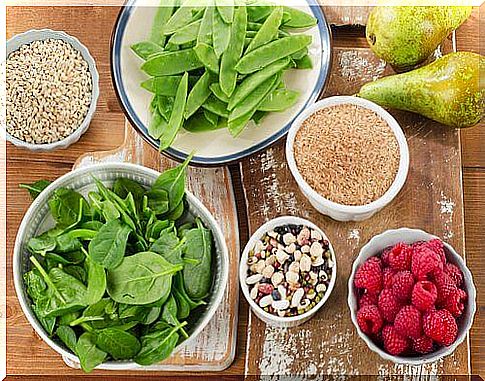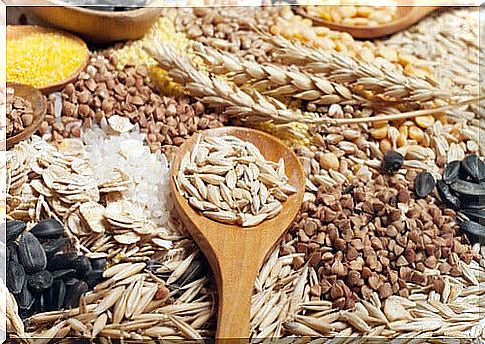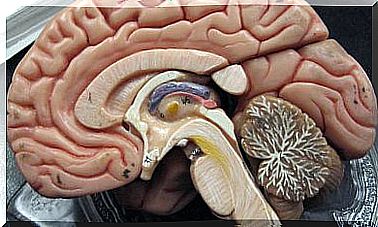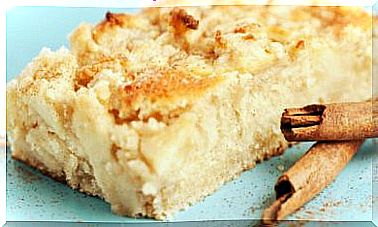7 Ways To Increase Your Fiber Intake To Treat Constipation
Find out how you can increase your fiber intake to combat constipation. We tell you the best eating habits with which to solve this problem.
Constipation is a fairly common condition. Sedentary lifestyle, lack of regular physical exercise, pre-cooked meals and a diet low in vegetables and fruits can be some of its causes. If you suffer from constipation, read on: we will tell you how you can increase your fiber intake to relieve slow transit.
Remember that fiber is a non-nutritive substance that can even block the absorption of certain minerals. However, in optimal amounts, it brings many health benefits.
How to increase your fiber intake

Determining what exactly constipation is can be difficult because the normality of passing stool varies from person to person. For some people it is common to go to the bathroom several times a day, while others find it normal to do it every other day.
So what is constipation? Basically, we speak of constipation when the person suffers when going to the bathroom because the large intestine has absorbed a large proportion of water and the stool has hardened. One of the best ways to avoid this is to eat a diet rich in fiber, drink at least two liters of water a day, and be physically active.
Constipation can be chronic, that is, it is a disease that affects daily life and can cause hemorrhoids and diverticulitis, or occasionally, produced by changes in routine, pregnancy, menopause or stress, among other possible causes.
7 tips for consuming fiber
One of the best ways to combat constipation is to increase your fiber intake, according to a study published in Alimentary Pharmacology & Therapeutics. Remember that a daily dose of 40 grams is recommended, according to the latest data from the World Health Organization. Now, how can we make sure we meet our needs?
1. Include vegetables in all your meals
It is not as difficult as you may think at first. The idea is that at least three of your meals (we include the snack here too) include vegetables. Keep in mind that vegetables provide a large amount of fiber, especially raw. Therefore, we advise you to include salads and vegetables in all your dishes. Here are some ideas:
- Lettuce and carrot salad.
- Sauteed broccoli with garlic.
- Boiled beets.
- Artichokes stuffed with vegetables.
- Asparagus.
- Sauteed mushrooms.
- Baked pumpkin.
- Spinach quiche .
Keep in mind that it is proven that a high consumption of vegetables is capable of reducing the risk of developing complex pathologies, such as cardiovascular ones.
2. The quintessential dessert should be fruit
Forget ice cream, cakes and pastries. The real dessert should always be fruit. Save the candy for special occasions. Remember that the food pyramid advises to moderate your consumption to a maximum of twice a week.
3. Healthy snacking
Much has been said about snacking and the same thing is always repeated: we should not eat between meals but many of us do not respect this maxim! If you need to snack between meals, do not eat cookies or bread, choose fruits and vegetables! The options are many and very healthy:
- Apples
- Bananas
- Peaches
- Tangerines
- Plums
- Pears
- Figs
- Berries
- Small carrots.
- Turnip slices.
4. Include more nuts in your diet
A handful of nuts may be what you need to get more fiber into your diet. Among the nuts with the highest amount of this component we find:
- Pistachios
- Raisins.
- Almonds
- Walnuts.
- Hazelnuts
- Macadamia nuts.
- Dates
- Cashew nuts
- Chestnuts
In addition, these foods are capable of reducing cardiovascular risk thanks to their content of omega 3 fatty acids. This is evidenced by an investigation published in the journal Fitoterapia .
5. Use seeds to give your salads a crunchy touch
Have you ever tried a salad with seeds? It tastes great and is also a great way to increase your fiber intake! Feel free to add chia, pumpkin, or sesame seeds to them.
6. Eat legumes regularly
Legumes are rich in fiber, therefore it would be appropriate for you to consume some of them at least a couple of times a week. Lentils stand out with 11.7 grams per 100 grams and soybeans with 15.7 grams per 100 grams, but beyond them you can include in your diet:
- Broad beans.
- Garbanzo beans.
- Green peas.
7. Choose whole grains

Few of us can resist bread, rice, or pasta. So why not take advantage of these foods to increase your fiber intake? To do this, we advise you to always opt for wholegrain varieties, since these preserve the fiber that is lost in the refining processes. Some ideas are:
- Oatmeal.
- Wholemeal bread.
- Bran bread.
- Wholemeal pasta.
- Integral rice.
- Saved.
- Puffed wheat.
- Homemade popcorn, without additives or sugars.
Changes in diet
Here are some changes you can easily make to your daily food intake to increase your fiber intake. Do not miss them!
| Instead of… | Eat… |
| White or lactal bread | Whole grain whole wheat bread |
| White rice | Integral rice |
| French fries (chips) | Homemade Popcorn |
| Biscuits | Apple |
| Yoghurt | Yogurt with fruits or nuts |
| Orange juice | Piece of orange |
| Sugary breakfast cereals | Oatmeal with raisins |
| Chips | Lettuce, carrot, mushroom and seed salad |
Improve your diet by including more fiber
Changing eating habits requires willpower. Consult with your doctor to determine your daily fiber intake based on your own needs. He better than anyone can help you develop a weekly menu according to your physical condition and medical history.









